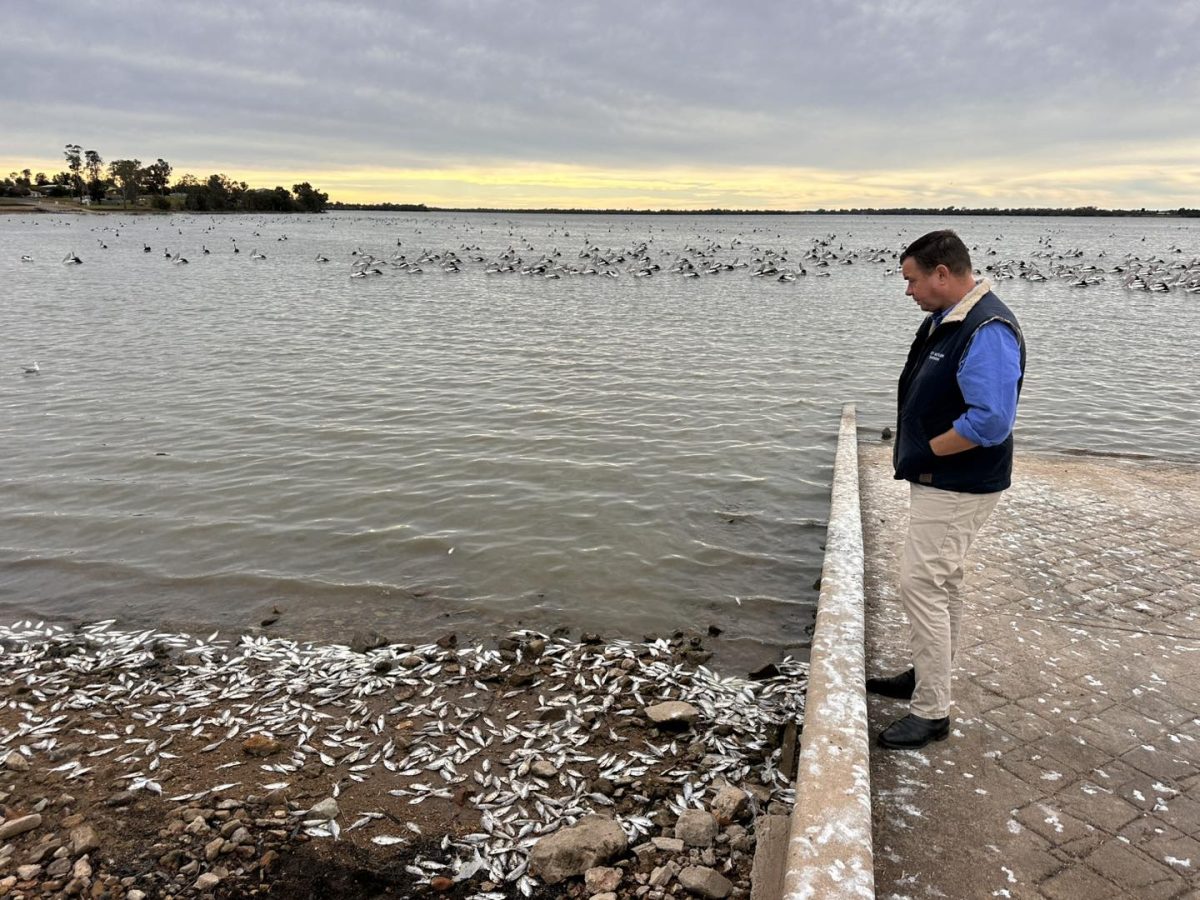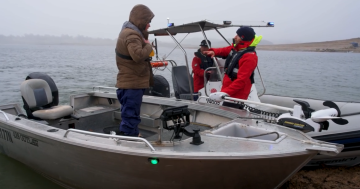
Independent MP for Barwon Roy Butler at the site of the fish kill at Lake Cargelligo. Photo: Roy Butler Facebook.
The NSW Government says a mass fish kill of bony bream at Lake Cargelligo in the Riverina is suspected to be an event known as a “winter die-off” caused by a drop in water temperatures.
However, a peak environmental body has called the incident “alarming” and urged the State Government to do more to reverse the decline in the quality of water in rivers and lakes.
Photos of the fish kill were posted on social media on Tuesday (8 July), including by the state MP representing the area, independent Member for Barwon Roy Butler.
“Talking to locals, this is a pretty regular occurrence when we have cold weather and the lake changes temperature,” he posted.
“NSW Fisheries will conduct an investigation regardless, but locals I have spoken with didn’t think it was unusual. The extensive birdlife at the lake has been cleaning things up.”
Bony bream are small to medium sized native fish found in the Murray Darling Basin that are also known as bony herring.
NSW Department of Primary Industries and Regional Development (DPIRD) Fisheries told Region it is was aware of a fish kill.
“DPIRD Fisheries staff attended the site on 8 July in line with the fish kill protocol and estimated that thousands of bony herring have been affected,” a spokesperson said.
“Bony herring can become stressed or die when water temperatures drop – this is known as ‘winter die-off’. DPIRD Fisheries staff have confirmed that this is the suspected cause of this fish kill event.”
Peak body Nature Conservation Council (NCC) CEO Jacqui Mumford said she was “extremely concerned” the number of fish kill events had tripled in the past three years, as reported in the latest NSW State of the Environment report from the NSW Environment Protection Authority.
“It’s a sure sign that NSW’s inland rivers are extremely sick when we are getting frequent, large scale fish kill events in both drought and flooding times,” she said.
“Fish kill events do occur in healthy ecosystems in times of significant temperature fluctuation, and bony bream are particularly susceptible. However, the number of fish that have perished in the Lake Cargelligo event is alarming. NCC looks forward to investigations into this event, and expects considerations into what impact, if any, the low water levels may have played in the fish kills would form part of those inquiries.”
Ms Mumford also highlighted the decline in quality of water in rivers and lakes from high nutrient runoff from farms, which was also highlighted in the State of the Environment report.
“The importance of healthy vegetation on riverbanks and wetlands to act as a buffer and filter for runoff water cannot be overstated. The NSW Government have an opportunity through the Integrated Catchment Management and Water Quality Governance Roadmap project to prioritise the revegetation of riparian zones across the state,” she said.
“From a statewide perspective, rivers, lakes and wetlands need the right flows at the right time to be healthy. Despite the law being clear that the health of the river must be prioritised, water sharing rules in NSW do not yet provide those well-timed flows that allow rivers to flow and connect.”
NSW Fisheries says community members are encouraged to report any fish deaths or observations through the Fishers Watch hotline on 1800 043 536. For more information on fish kills, visit its website.








